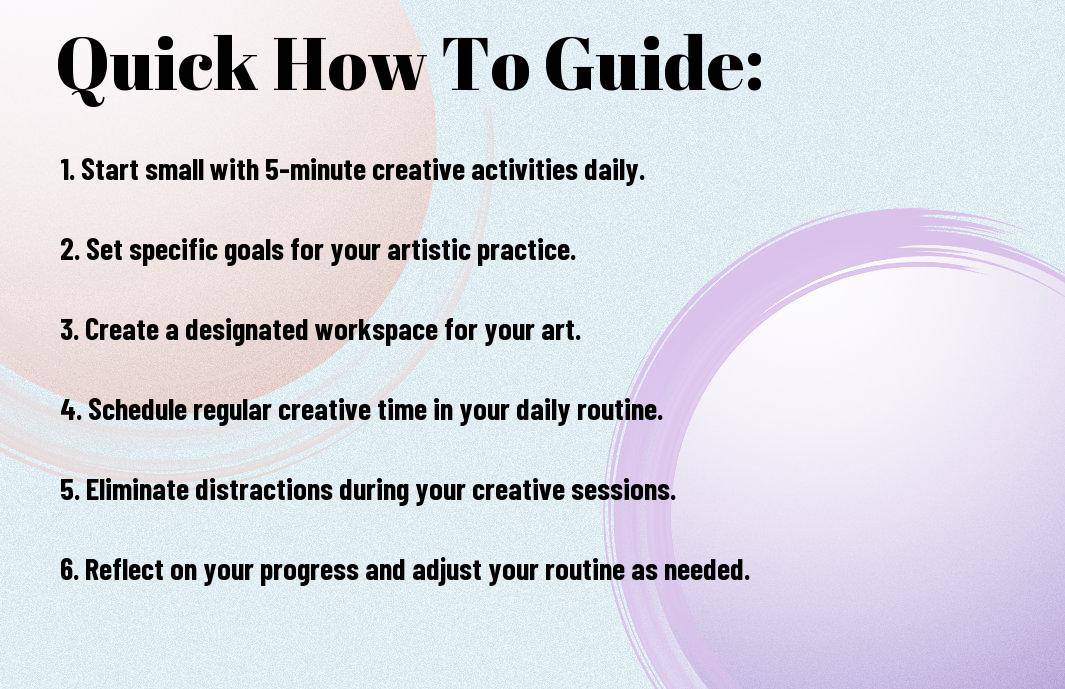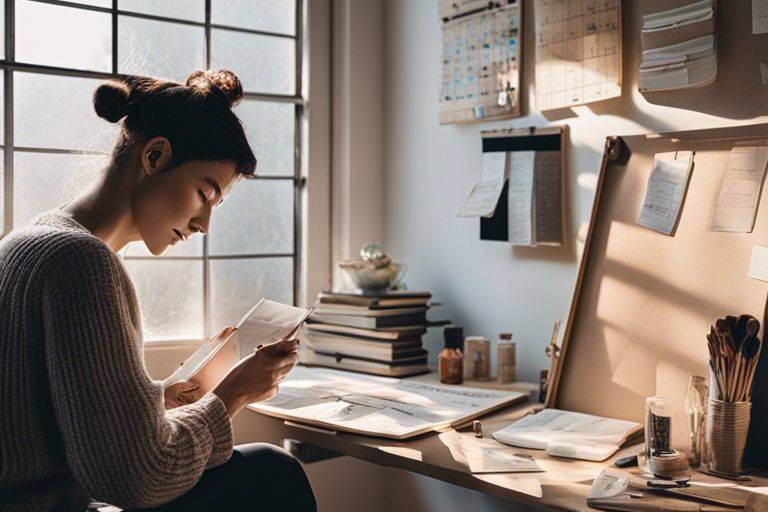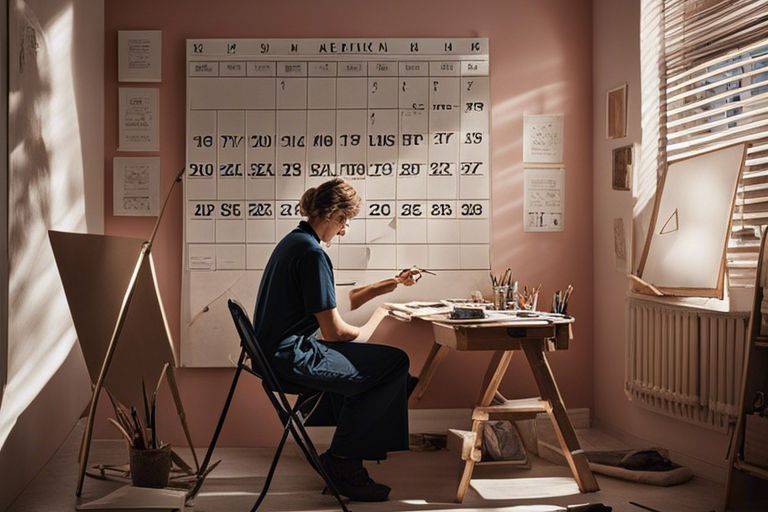Atomic Habits for Artists!
Many artists understand the struggle of maintaining a consistent creative routine. However, by incorporating the principles of Atomic Habits into your daily practice, you can cultivate a sustainable and productive workflow that unleashes your true artistic potential. In her blog post, Atomic Habits for Creatives – How to Stay Motivated And …, Serena Archetti shares valuable insights and practical tips to help you establish positive habits that benefit your artistic journey.
Key Takeaways:
- Start small: Begin by incorporating small habits into your creative routine to avoid feeling overwhelmed.
- Consistency is key: Establish a regular schedule for creating art to build momentum and improve your skills over time.
- Environment matters: Create a conducive workspace that inspires creativity and helps you stay focused on your artistic goals.
- Track your progress: Keep a journal or use apps to monitor your creative habits and identify areas for improvement.
- Reward yourself: Celebrate small wins and milestones in your creative journey to stay motivated and reinforce positive habits.
- Stay adaptable: Be willing to adjust your routine as needed to accommodate changes in your life or artistic goals.
- Seek accountability: Share your creative goals with others or find a mentor to help you stay on track and stay motivated.

Laying the Foundation: Understanding Habits
Little by little, habits shape our lives and routines. As artists, cultivating positive habits can significantly impact our creativity, productivity, and overall well-being. By understanding the concept of atomic habits, we can begin to lay the foundation for a more intentional and fulfilling artistic journey.
What Are Atomic Habits?
On a basic level, atomic habits are small, incremental changes that lead to significant outcomes over time. They are tiny actions that are easy to implement and sustain, but when compounded, they result in remarkable results. For artists, this could mean dedicating just a few minutes each day to sketching, writing, or practicing your craft consistently. These small habits may seem insignificant at first, but over weeks and months, they can lead to substantial artistic growth.
Why Small Changes Make a Big Difference
Some may question the impact of such minor adjustments in their daily routine. However, research shows that small changes can create lasting transformations. By focusing on tiny habits and making incremental improvements, artists can avoid overwhelming themselves while gradually building a stronger creative foundation. Consistency is key, and by making small changes that are sustainable in the long run, artists can establish a solid routine that supports their artistic endeavors.

Preparing Your Creative Space
All artists know the importance of a dedicated creative space that fosters inspiration and productivity. In my blog post on Atomic Habits for Artists, I examine into how creating the right environment can have a significant impact on your artistic journey. Let’s explore how you can set up your creative space for success.
Tips for Designing a Distraction-Free Environment
Clear clutter: A cluttered space can lead to a cluttered mind. Keep your workspace tidy and organized to promote focus and creativity. Minimize distractions: Identify potential distractions in your creative space, such as your phone or noisy surroundings, and take steps to eliminate them. Create a visual inspiration board: Surround yourself with images and objects that inspire you and ignite your creativity.
- Clear clutter to declutter your mind.
- Minimize distractions to stay focused on your art.
- Create a visual inspiration board to spark creativity.
Though it may take time to create a distraction-free zone, the benefits of a focused environment will enhance your artistic process and help you produce your best work.
How to Set Up Your Materials for Success
Assuming you have organized your creative space, the next step is to set up your materials for success. Preparing your art supplies and tools in an accessible and efficient manner can streamline your workflow and boost your productivity. By having a designated spot for each tool and supply, you can eliminate time wasted searching for what you need and instead focus on your creative process.
Preparing your materials in a way that works best for you can make a significant difference in how smoothly your creative sessions flow. Organizing your materials not only helps you work more efficiently but also ensures that you can fully immerse yourself in the creative process without interruptions.
Crafting Your Creative Routine
How to Identify Your Best Creative Times
Now is the perfect time to craft your creative routine as an artist. One of the first steps is to identify your best creative times. Even if you consider yourself a night owl or an early bird, pay attention to when you feel most inspired and productive creatively. Is it first thing in the morning, during your lunch break, or late at night? Knowing your peak creative times can help you schedule your art-making sessions more efficiently.
Strategies for Consistent Creative Practice
Now, let’s explore some strategies to maintain a consistent creative practice. Times of the day when you feel most energized and focused can be ideal for dedicating to your art. It’s important to prioritize and block out this time on your calendar to ensure you make progress on your creative projects. Consider setting a timer for short, dedicated art-making sessions to prevent burnout and overwhelm.
Your creative routine should be tailored to suit your unique preferences and lifestyle. Experiment with different strategies until you find what works best for you. Whether it’s creating a visual art journal, setting daily art goals, or establishing a reward system for completing tasks, find what motivates you to show up consistently for your art practice.
The Role of Motivation and Mindset
Unlike talent, motivation and mindset are factors that can be nurtured and developed over time. They play a crucial role in shaping your creative routine and overall artistic journey.
Cultivating the Right Mindset for Creativity
Even the most talented artists can struggle if they do not have the right mindset for creativity. It is important to believe in your abilities, embrace failures as learning opportunities, and stay open to new ideas and perspectives. Cultivating a growth mindset, where you see challenges as opportunities to grow and improve, can help you push past creative blocks and overcome self-doubt.
How to Stay Motivated When Inspiration Falters
Mindset plays a crucial role in staying motivated when inspiration falters. It’s natural for creative energy to ebb and flow, but it’s important to have strategies in place to keep you going during the lulls. Setting small, achievable goals, creating a supportive environment, and practicing self-compassion are some ways to maintain motivation even when the creative spark feels dim.
This chapter explores how motivation and mindset are key elements in building a sustainable creative routine. By cultivating the right mindset and knowing how to stay motivated when inspiration wanes, you can create a solid foundation for your artistic practice.
Overcoming Creative Blocks and Slumps
The Embracing the 100 Day Art Challenge: Atomic Habits for Your Art can be a powerful way to break through creative blocks and slumps. By committing to creating something every day for 100 days, you can gradually build your creative muscles and overcome barriers that may be holding you back.
Identifying Factors That Hinder Your Creativity
The first step in overcoming creative blocks and slumps is to identify the factors that may be hindering your creativity. This could be anything from fear of failure to perfectionism to lack of inspiration. Take some time to reflect on what is causing your creative block so that you can address it head-on. Thou awareness is the first step towards making a positive change in your creative routine.
How-to Tactics for Breaking Through Barriers
If you find yourself stuck in a creative rut, there are several tactics you can use to break through barriers and get back to creating. One effective strategy is to try new techniques or mediums that you haven’t explored before. This can help spark new ideas and reinvigorate your creative energy. Another tactic is to set small, achievable goals for yourself each day. This can help build momentum and keep you motivated to continue creating.
Barriers to creativity can be frustrating, but with the right mindset and approach, you can overcome them and unleash your full creative potential.
Tracking Progress and Celebrating Success
For artists looking to build a sustainable creative routine, tracking progress and celebrating success are necessary components. By keeping tabs on your growth, you can identify patterns, strengths, and areas for improvement in your creative journey.
Methods for Measuring Your Creative Growth
For a tangible way to measure your progress, consider keeping a creativity journal. Document the time you spend on your art, the skills you’ve developed, and the projects you’ve completed. Setting specific goals for yourself, such as completing a certain number of pieces or learning a new technique, can also help you track your growth over time. Additionally, seeking feedback from trusted peers or mentors can provide valuable insights into your artistic development.
The Importance of Recognizing Your Achievements
Recognizing your achievements as an artist is crucial for maintaining motivation and confidence. Celebrating even small wins, such as finishing a challenging piece or receiving positive feedback, can boost your morale and fuel your passion for creating. Acknowledging your successes not only validates your hard work but also helps you set new goals and benchmarks for the future.
The act of recognizing your achievements can also help you stay focused on your long-term artistic vision. By reflecting on how far you’ve come, you can stay inspired and motivated to continue pushing yourself towards your creative goals. Do not forget, every step forward, no matter how small, is worth celebrating on your artistic journey.
Continuous Improvement and Adaptation
Many successful artists understand the importance of continuous improvement and adaptation in their creative routines. By constantly seeking ways to grow and evolve, artists can push past limitations and unlock new levels of creativity. This mindset not only fosters artistic development but also allows artists to stay inspired and motivated throughout their career.
How to Add Variety to Your Routine Without Losing Consistency
Some artists may fear that introducing too much variety into their routine will disrupt their consistency. However, it is possible to add elements of variety without sacrificing the core habits that support your creative practice. Consider incorporating new techniques, mediums, or subjects into your work periodically to keep things fresh and exciting. Experiment with different time blocks for your creative sessions or explore new locations for inspiration. These small changes can reinvigorate your creative process while maintaining a sense of consistency in your routine.
When and How to Adjust Your Habits as You Evolve
Some artists may find that as they grow and evolve, their creative habits need to adapt as well. It’s important to regularly evaluate your habits and be willing to make adjustments as needed. If you find that certain routines no longer serve you or hinder your progress, be open to modifying them. Your creative journey is a constant evolution, and your habits should reflect that growth.
Your creative habits should support your artistic goals and aspirations. As you evolve as an artist, your habits may need to evolve with you. Stay attuned to your needs and be willing to make changes that will help you continue to thrive creatively.
For instance, if you find that your current morning routine no longer sparks creativity, consider switching things up. Maybe try incorporating a short meditation session or a quick sketching exercise to kickstart your day with a fresh perspective. Listening to your instincts and being open to change will ultimately lead to a more fulfilling creative practice.
To wrap up
Building a creative routine as an artist is crucial for nurturing your skills and consistently producing high-quality work. Atomic Habits provides valuable insights on how to establish effective habits and break bad ones, which can greatly benefit artists looking to improve their workflow and productivity. By implementing small changes and focusing on continuous improvement, artists can create a sustainable routine that fuels their creativity and helps them reach their artistic goals.
Bear in mind, developing a creative routine is a personal journey, and what works for one artist may not work for another. It’s necessary to experiment, be flexible, and find the habits that suit your unique preferences and creative process. By incorporating the principles of Atomic Habits into your daily practice, you can lay a solid foundation for long-term success and fulfillment as an artist.
FAQ
Q: Why is building a creative routine important for artists?
A: Building a creative routine helps artists establish consistent habits, minimize distractions, and stay motivated to create consistently.
Q: How can atomic habits benefit artists in their creative process?
A: Atomic habits focus on small, incremental changes that can lead to significant improvements over time, making them ideal for artists looking to enhance their creative routines.
Q: What are some examples of atomic habits that artists can incorporate into their daily routine?
A: Examples of atomic habits for artists include setting aside a specific time each day to create, breaking down projects into smaller tasks, and reflecting on progress regularly.
Q: How can artists stay motivated to maintain their creative routine?
A: Artists can stay motivated by setting goals, seeking inspiration from other creatives, rewarding themselves for consistency, and tracking their progress.
Q: What are some common challenges artists may face when trying to build a creative routine?
A: Common challenges include procrastination, self-doubt, distractions, lack of time management, and difficulty staying disciplined.
Q: How can artists overcome obstacles and setbacks in their creative routine?
A: Artists can overcome obstacles by practicing self-compassion, seeking support from peers, adapting their routine as needed, and focusing on continuous improvement.
Q: Are there any additional resources or tools that can help artists build a successful creative routine?
A: Yes, artists can benefit from tools such as habit tracking apps, online courses on creativity and productivity, creative challenges, and joining communities or workshops with like-minded individuals.



